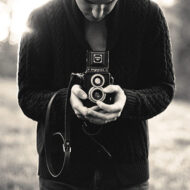4 Tips on Making Your Drawings More Realistic
Besides Practice, Of Course
How to make your drawings more realistic is the most common question asked by beginner artists. Of course, most want to draw like Michelangelo right from the start. But realistic drawings will remain elusive until you address these 4 common mistakes. This post will briefly address each and we’ll go into each one in more depth in up-coming posts. Also, nobody (myself included) likes to discuss our own mistakes so I’ll be doing away with the mistakes part and addressing them as tips instead because this is what we’ll be addressing and changing for the better. So get ready to take some notes!

Get ready to take some notes!
The 4 tips for making your drawings more realistic are:
- Control your lines
- Value or Shading
- Perspective
- Proportion
Control Your Lines

The kind of lines you use can make or break a realistic drawing.
I would venture to say that all artists start off by drawing everything with a heavy black line around everything. This creates a coloring book look, which is definitely the furthest from realism we can get. Nothing in life has lines around it even though our eyes perceive it that way. One of the fastest ways to lose that realistic look is to put a line around objects in your drawings.
Value (or Shading)
Most realistic drawings use a full range of value, from the lightest lights to the darkest darks.
This is an element that many people have trouble with. Most don’t push it far enough. In other words, darks aren’t nearly dark enough, and lights aren’t bright enough. Drawings end up looking very washed out and faded. Having your values on point means that the darkest shadows will be almost black and have the appearance of being further back in the drawing and will also accentuate the brighter highlighted areas, making them pop forward. This results in a drawing that has volume and dimension which adds to its realism.
Perspective

Perspective is basically your point of view.
In a nutshell, perspective is your point of view. Objects look different if you’re looking down at it versus if the object is at your eye level. This element might not come into play as heavily with a closeup portrait, but it definitely does if you’re drawing a landscape or cityscape. Even drawing the interior of a bedroom can be a disaster if the perspective is off.
Proportion

The basic definition of proportion is how objects relate to each other in size and distance to other objects.
Proportion is a big deal when trying to create realistic drawings. Basically, proportion means how the size and distance of one object relates to other objects. The best and easiest example is with portrait drawings. It’s easy to identify things like the eyes being too large and too close together. The nose might be drawn too small for the face. Whatever the case may be, if you want a drawing (especially a portrait) to look realistic, you must be able to draw proportions as accurately as possible.
Over the next several weeks we’ll cover each tip one at a time in depth. If you want in on these tips on how to draw more realistic drawings, then stay tuned and join us. See you back here next week where we’ll dive into lines.
If you like what you’re reading, please subscribe. And if you know anyone who might enjoy or benefit from these posts, please share and send them a link.
Further Reading:
FREE CLASS – How to Draw…The Very Basics
This blog contains Amazon Affiliate links. As an Amazon Associate, I may earn from qualifying purchases.



Recent Comments